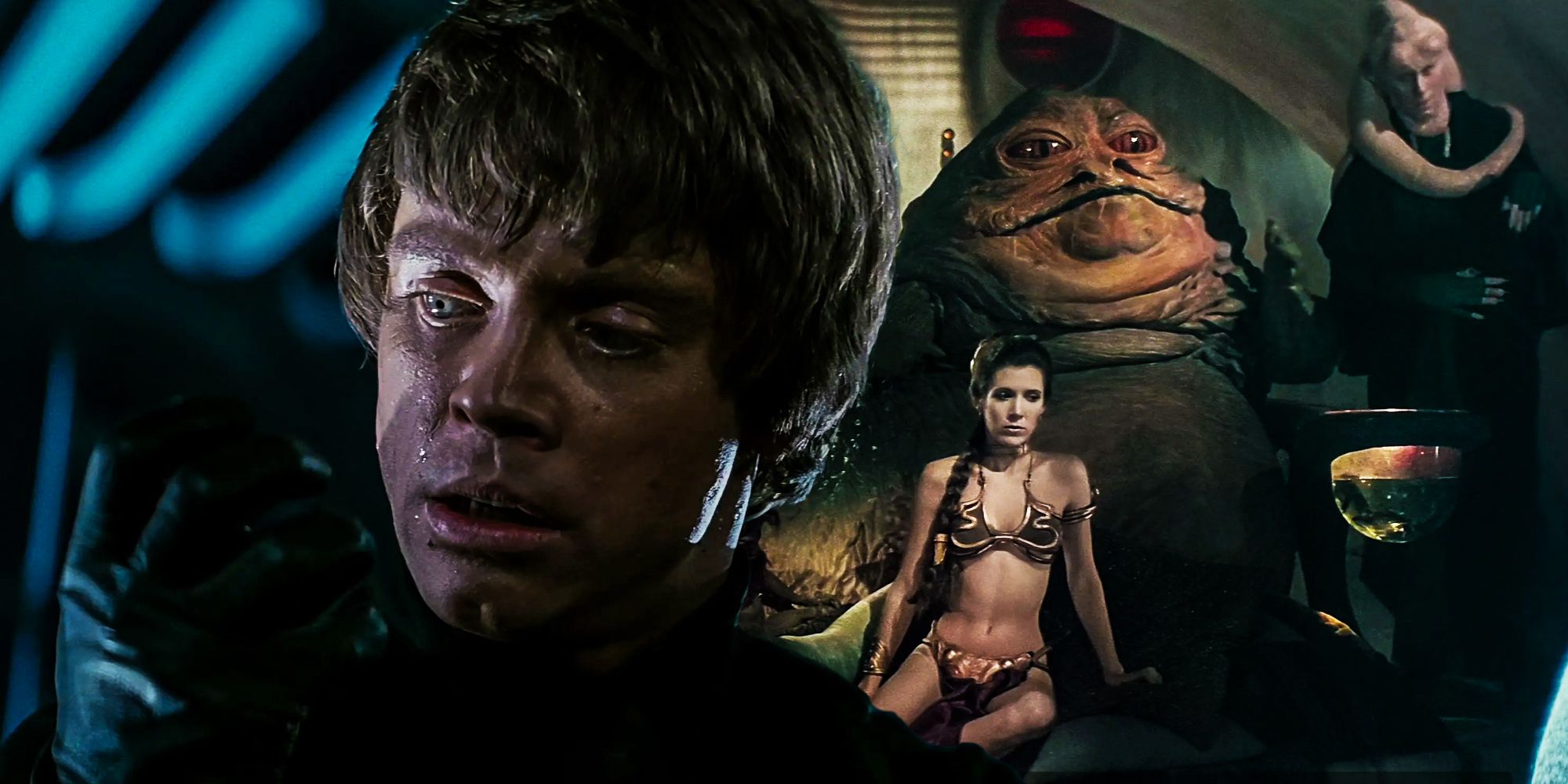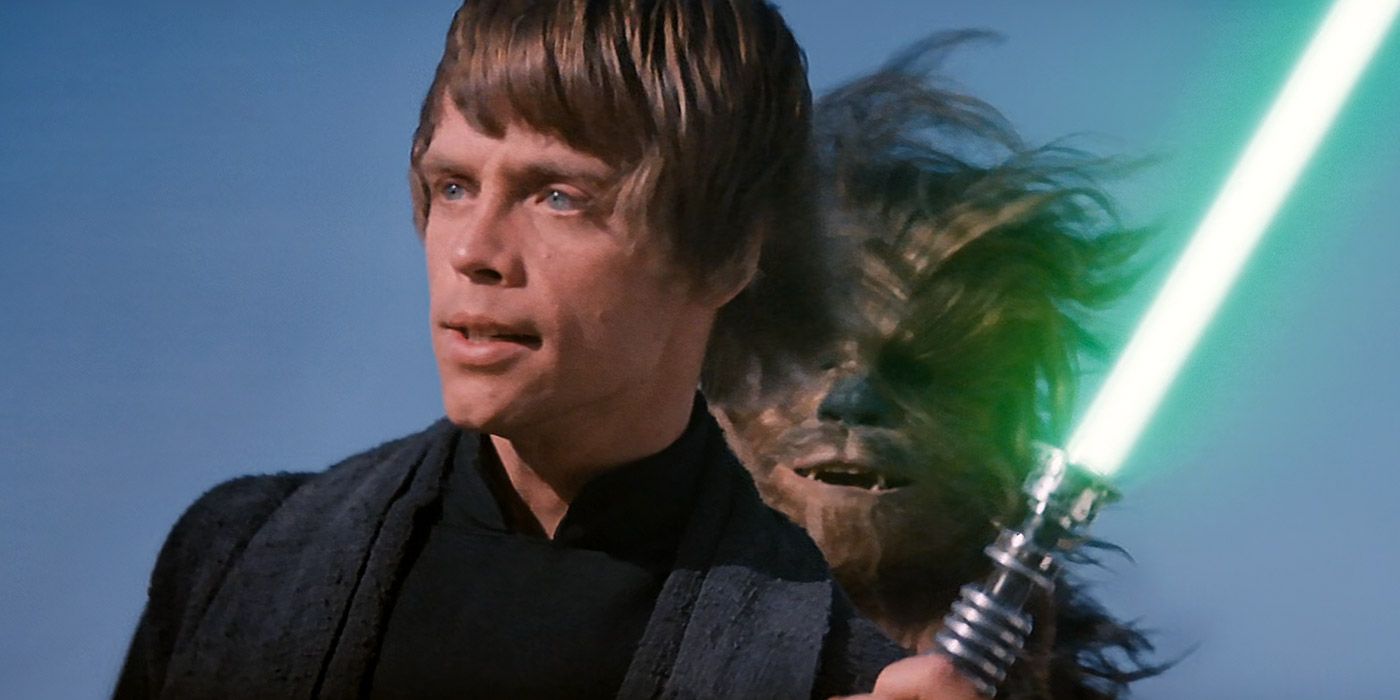Luke Skywalker struggles with the temptation of the dark side of the Force throughout Return of the Jedi, and the film’s music score helps clarify where and when this occurs. The Star Wars saga became a pop culture phenomenon in the 70s and 80s, with unprecedented immersion and emotion thanks to its audio and visual design, archetypical yet undeniably human characters, and some of John Williams’ best film scores. Williams’ extraordinary work in Return of the Jedi helps communicate the finale of Luke Skywalker’s three-movie original trilogy character arc, from his triumphant victories to his struggle against the dark side.
In the Star Wars original trilogy, Luke Skywalker's (Mark Hamill) characterization is that of an ordinary farmer rising to the occasion and contributing to the Galactic Empire’s defeat by becoming a Jedi Knight. However, after discovering Darth Vader’s (James Earl Jones) true identity in The Empire Strikes Back, Luke’s conflict with the Sith Lord becomes far more complicated, with Luke opting to redeem his father instead of killing him. All the while, Luke’s emotional vulnerability, desperation to save his friends, and Emperor Palpatine’s (Ian McDiarmid) machinations result in Luke’s repeated temptation to make a Faustian bargain by embracing the dark side of the Force.
A film’s music score is one of the best ways to understand the intentions of particular moments. In Return of the Jedi, Luke often struggles with the dark side’s temptation, but not all scenes have this foreboding undertone. While John Williams’ score perfectly conveys Luke’s temptation aboard the Death Star II, he also uses it to frame the Sarlacc Pit action scene as a more triumphant moment, highlighting Luke’s heroism and later his internal conflict in subtle ways.
John Williams' Score In Return Of The Jedi Explained
The Sarlacc Pit was not only the long-anticipated rescue of Han Solo (Harrison Ford) but also the cathartic conclusion of Luke’s grueling Jedi training. With a new green-bladed lightsaber and expertise in Form V, Luke fought as a true Jedi Knight, even if he hadn’t attained knighthood quite yet. John Williams’ "Sail Barge Assault" is an all-out epic, using the Star Wars theme (which represents Luke in the original trilogy) and Rebel fanfare to excellent effect in a fast-paced flourish. Luke may struggle with the dark side at other points in Return of the Jedi, but his battle against Jabba’s enforcers was as a well-trained hero and his allies rescuing their friend.
Williams uses "The Emperor’s Theme" and sinister twists on "The Force Theme" in Return of the Jedi’s third act, as Luke is tempted by the dark side of the Force. When Luke finally crosses blades with Darth Vader, Williams brilliantly gives their duel a slow and contemplative score, as each time Luke fights, he’s getting dangerously closer to tapping into the dark side. The score reaches its haunting peak when Luke finally gives in for a moment, unleashing an onslaught of strikes to overpower Darth Vader, nearly succumbing to the dark side in the process before he regains his composure.
Film music conveys emotions in ways that even dialogue and cinematography can’t, and John Williams’ iconic Star Wars soundtrack is no exception. Luke’s struggle with the dark side throughout Return of the Jedi may make it unclear when he’s coming close to embracing it in which scenes, but John Williams’ score helps communicate George Lucas and Richard Marquand’s intentions regarding Luke's temptations. While Luke nearly gives in to the dark side in act 3 of Return of the Jedi, John Williams’ music establishes that he had no such struggle when rescuing Han Solo from Jabba the Hutt.


